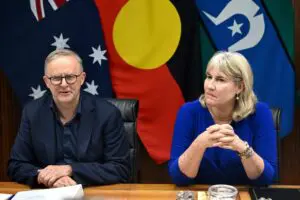A new round of seed funding is being offered for the creation of a new “hydrogen technology cluster network” to support Australia’s emerging hydrogen sector and help take advantage of a multi-billion dollar global opportunity.
Under the seed funding program being offered by National Energy Resources Australia (NERA), prospective hydrogen technology clusters can apply for up to $100,000 in funding, to support the creation of new partnerships between different parts of the hydrogen supply chain. Applications can be made by individual organisations or by consortiums.
National Energy Resources Australia was formed under the Turnbull government and uses federal government funding to leverage private sector co-funding for industry development grants in the energy sector. The program has worked across all energy and resources technologies, with no specific mandate to work with renewables.
NERA has invited applications from proponents who have the capacity to establish a hydrogen technology cluster in a specified region within Australia, and will aim to establish a virtual nationalised network of clusters operating across Australia.
By helping to establish the technology clusters, NERA hopes to support the creation of new relationships between hydrogen producers, processors and users and will work towards the establishment of a thriving Australian hydrogen sector.
“NERA’s National Hydrogen Cluster strategy is focussed on developing a global identity and recognised brand for Australian hydrogen technology and expertise, but to get to this goal, we need a bottom-up approach that taps into networks and capabilities that already exist,” NERA CEO Miranda Taylor said.
“To realise this potential, we are developing regional clusters around key hydrogen projects and technology supply chains in strategic locations that have a demonstrated capacity to support them, thereby creating long-term local cohesion and sustainable capability across the emerging hydrogen value chain.”
The creation of hydrogen technology hubs was a recommendation of the National Hydrogen Strategy developed by chief scientist Dr Alan Finkel, and endorsed by federal and state energy ministers through the former COAG Energy Council.
The National Hydrogen Strategy found that an Australian hydrogen industry could grow to contribute as much as $11 billion to the Australian economy by 2050, as well as creating 7,600 new clean energy jobs.
Australia already has a growing green hydrogen sector, with a number of pilot projects producing zero emissions fuel for transport, and mixing in mains gas networks, and the Australian Renewable Energy Agency is preparing to pour $70 million in grant funding into building up Australia’s large-scale electrolyser capacity.
The Northern Territory will become one of the first jurisdictions to develop a hydrogen cluster under the NERA program, with the Northern Territory government seeing hydrogen as a key contributor to achieving a target of zero net emissions by 2050.
“The Territory has embraced a target of net-zero emissions by 2050, and hydrogen will play a critical role in achieving this target,” CEO for the Northern Territory’s Department of Trade, Business and Innovation, Shaun Drabsch, said.
“We are committed to the continued development of leading-edge energy technologies across our region, and the establishment of a regional hydrogen cluster in Darwin will help accelerate the growth of capabilities and drive collaboration to ensure Territory based companies are well placed to supply new technology, products and services to domestic and international markets.”
The announcement of seed funding for hydrogen projects was welcomed by Energy Networks Australia, who said the program should help to bring down the costs of hydrogen production while also helping to build up skills and experience within the Australian industry.
“Technology clusters will support the development of different technologies to bring down costs of hydrogen production, transport and end-use,” Energy Networks Australia’s head of gas Dr Dennis Van Puyvelde said.
“Mapping the hydrogen landscape will create better opportunities to collaborate on technology development and integrate supply chains. Networks are already pushing ahead with hydrogen demonstration projects, with two already in operation and two more under construction.”
Applications for the seed funding are open until 14 October, with NERA set to announce the successful recipients in November 2020. NERA will hold an information session to assist in the development of seed funding applications in September.









